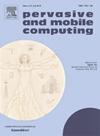Position claim verification for emergency message propagation in Vehicular Ad-Hoc Networks
IF 3.5
3区 计算机科学
Q2 COMPUTER SCIENCE, INFORMATION SYSTEMS
引用次数: 0
Abstract
Pervasive and mobile computing can play a crucial role in the prevention, detection and management of natural and human-caused disasters. In this context, the Internet of Vehicles (IoV) is particularly noteworthy due to its recent technological advancements and increasing prevalence. In fact, IoV can be leveraged to improve various applications, including those aimed at reducing the millions of fatalities that occur every year. The effectiveness of these applications often relies on the rapid dissemination of emergency messages through position-based forwarding protocols, which can unfortunately be vulnerable to adversarial attacks. Without loss of generality, we focus on the specific case study of road safety to provide a realistic example and discuss two potential attacks based on fake position claims that malicious nodes could easily execute to compromise the performance of the position-based forwarding protocol. We also propose and analyze a validation system based on machine learning (ML) techniques designed to detect malicious nodes, discard false information, and protect against these attacks.
车载自组织网络中紧急信息传播的位置声明验证
普及和移动计算可以在预防、发现和管理自然灾害和人为灾害方面发挥关键作用。在这种情况下,由于其最近的技术进步和日益普及,车联网(IoV)尤其值得注意。事实上,车联网可以用来改善各种应用,包括那些旨在减少每年数百万人死亡的应用。这些应用的有效性往往依赖于通过基于位置的转发协议快速传播紧急信息,不幸的是,这种转发协议很容易受到对抗性攻击。在不失去一般性的前提下,我们将重点放在道路安全的具体案例研究上,提供一个现实的例子,并讨论两种基于虚假位置声明的潜在攻击,恶意节点可以很容易地执行这些攻击来损害基于位置的转发协议的性能。我们还提出并分析了一个基于机器学习(ML)技术的验证系统,该系统旨在检测恶意节点,丢弃虚假信息并防范这些攻击。
本文章由计算机程序翻译,如有差异,请以英文原文为准。
求助全文
约1分钟内获得全文
求助全文
来源期刊

Pervasive and Mobile Computing
COMPUTER SCIENCE, INFORMATION SYSTEMS-TELECOMMUNICATIONS
CiteScore
7.70
自引率
2.30%
发文量
80
审稿时长
68 days
期刊介绍:
As envisioned by Mark Weiser as early as 1991, pervasive computing systems and services have truly become integral parts of our daily lives. Tremendous developments in a multitude of technologies ranging from personalized and embedded smart devices (e.g., smartphones, sensors, wearables, IoTs, etc.) to ubiquitous connectivity, via a variety of wireless mobile communications and cognitive networking infrastructures, to advanced computing techniques (including edge, fog and cloud) and user-friendly middleware services and platforms have significantly contributed to the unprecedented advances in pervasive and mobile computing. Cutting-edge applications and paradigms have evolved, such as cyber-physical systems and smart environments (e.g., smart city, smart energy, smart transportation, smart healthcare, etc.) that also involve human in the loop through social interactions and participatory and/or mobile crowd sensing, for example. The goal of pervasive computing systems is to improve human experience and quality of life, without explicit awareness of the underlying communications and computing technologies.
The Pervasive and Mobile Computing Journal (PMC) is a high-impact, peer-reviewed technical journal that publishes high-quality scientific articles spanning theory and practice, and covering all aspects of pervasive and mobile computing and systems.
 求助内容:
求助内容: 应助结果提醒方式:
应助结果提醒方式:


